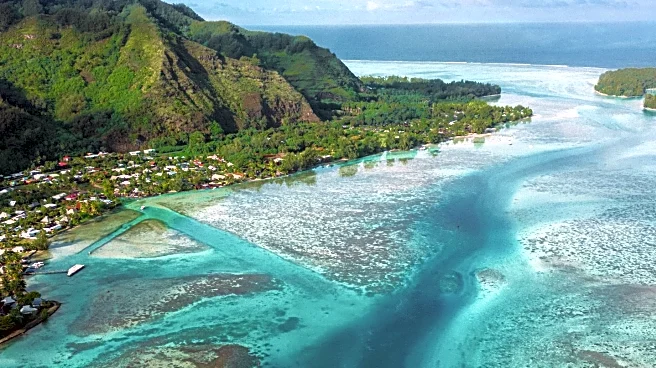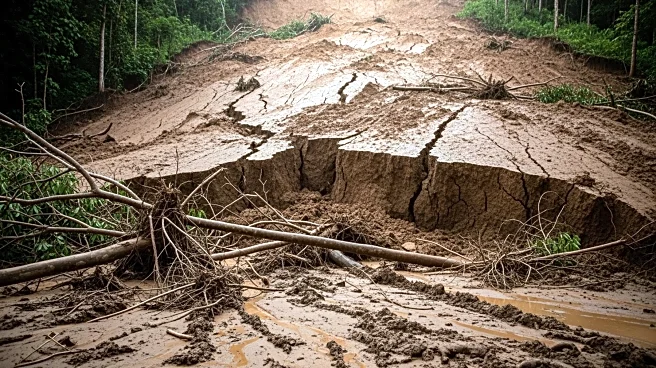What's Happening?
Archaeologists have uncovered ancient tools in Southeast Asia that suggest early humans developed complex maritime technologies much earlier than previously believed. The tools, found in the Philippines,
Indonesia, and Timor-Leste, indicate that Paleolithic humans may have been capable of seafaring as early as 40,000 years ago. This discovery challenges the long-held belief that technological advancements originated in Africa and Europe, proposing instead that parallel innovations occurred independently in Southeast Asia. The tools show signs of fiber extraction, essential for making ropes and nets, and were found alongside fishing implements and remains of large pelagic fish, indicating advanced seafaring capabilities.
Why It's Important?
This discovery could significantly alter the understanding of early human migration and technological development. It suggests that Southeast Asia was a center of innovation, challenging the Eurocentric view of technological progress. The findings highlight the potential for independent technological advancements outside of Africa and Europe, reshaping the narrative of human history. This could lead to a reevaluation of archaeological biases and encourage further exploration of regions previously overlooked due to preservation challenges. The implications extend to understanding human adaptability and the spread of cultures across the globe.
What's Next?
Researchers are conducting experimental archaeology through the FLOW Project, aiming to reconstruct Paleolithic-era boats using inferred technologies. This project seeks to demonstrate the feasibility of early humans executing complex marine voyages. If successful, it could provide material proof of advanced seafaring capabilities, further supporting the notion of independent innovation in Southeast Asia. The academic community's acceptance of these findings could lead to a paradigm shift in the study of early human history, prompting new research and exploration in the region.
Beyond the Headlines
The discovery challenges existing biases in the archaeological record, where the absence of material evidence has been equated with a lack of technological development. It underscores the importance of considering environmental factors that affect preservation and encourages a broader perspective on human innovation. This could lead to a more inclusive understanding of global history, recognizing diverse contributions to technological progress.












